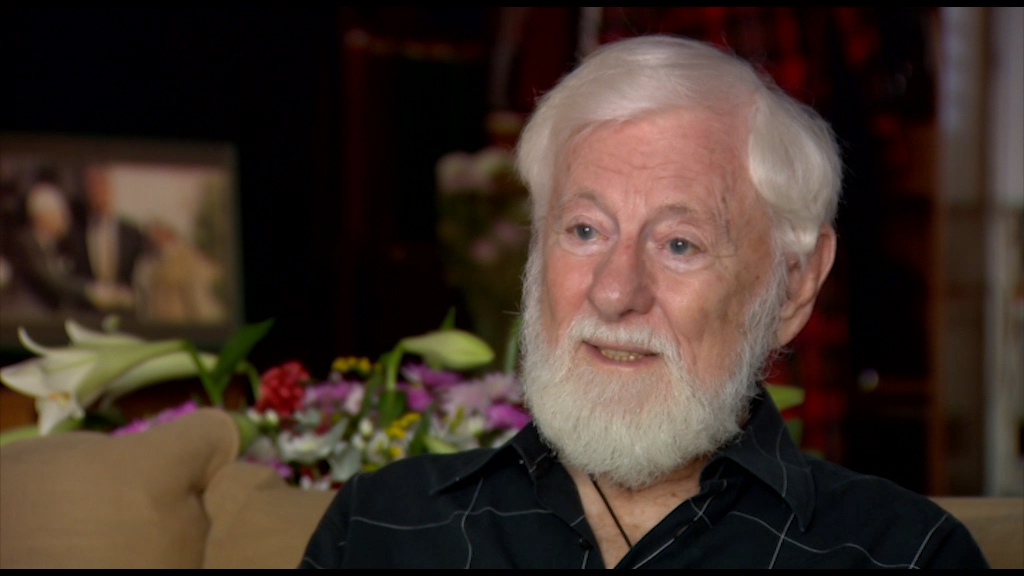NEXT STORY

Battles of Negba
RELATED STORIES

NEXT STORY

Battles of Negba
RELATED STORIES


|
Views | Duration | |
|---|---|---|---|
| 41. Two separate wars | 24 | 04:28 | |
| 42. Confrontation with Egyptian forces | 22 | 04:40 | |
| 43. The first battle against a real army | 24 | 05:22 | |
| 44. The first ceasefire | 17 | 02:40 | |
| 45. The Ashkenazi commandos | 18 | 02:30 | |
| 46. Battles of Negba | 18 | 02:59 | |
| 47. The battle of Ibdis | 33 | 03:19 | |
| 48. A test of courage | 17 | 01:13 | |
| 49. Samson's Foxes | 17 | 03:21 | |
| 50. The Fallujah pocket | 27 | 02:37 |


And the company got rid of all of them. We remained with a much smaller number of soldiers, only those that the commanders wanted. One of the reason why I think they chose us was to be a commando squad. They also divided us into two groups: one for the jeeps, one for the armoured vehicles. And even then it was not a division, which in today's terms I would add in parentheses wasn't free from ethnic discrimination. At the Jeeps we were a small unit, Ashkenazi, almost pure Ashkenazi. And we had Jeeps. The Command of the IDF, the Chief of General Staff, did not approve the establishment of the unit. This was an initiative of the brigade command. It was customary in those days, in violation of orders while ignoring the orders, not to question orders. Anyway, how to get jeeps? They sent soldiers into the streets of Tel Aviv and they got hold of jeeps and on each of these jeeps they mounted two machine guns, which was serious firepower. Four such jeeps with eight machine guns this was a serious force in those days. And we got jeeps, and I became a gunner on one of the jeeps and I was happy. I was happy. Why was I happy? Because, like I said, I hate walking on sand. The truth is, I hate to walk altogether and to get on to the jeeps, it meant the end of the infantry, the end of walking, the end of carrying things; everything was in the jeep, and I was really happy.
והפלוגה נפטרה מכולם. נשארו עם מספר חיילים הרבה יותר קטן, אבל באמת אלה שהמפקדים רצו אותם. ואני חושב שבחרו אותנו להיות פלוגת קומנדו, זו הייתה אחת הסיבות. גם אותנו חילקו לשני חלקים: אחד של ג'יפים, אחד של משוריינים. וגם אז זו הייתה מין חלוקה שברוח ימינו אני צריך להוסיף בסוגריים שהיא חלוקה שלא הייתה לגמרי חופשית מהפרדה עדתית. ואנחנו בג'יפים היינו למעשה יחידה קטנה, אשכנזית, כמעט אשכנזית טהורה, וקיבלנו ג'יפים. הפיקוד של צה"ל, המטכ”ל, בכלל לא אישר את הקמת היחידה. זו הייתה יוזמה של פיקוד החטיבה. כנהוג בימים ההם, תוך הפרת פקודות, תוך התעלמות מפקודות, שלא לשאול פקודות.
בכל זאת איך מקבלים ג'יפים? שלחו חיילים לרחובות תל-אביב וסחבו ג’יפים. ועל הג'יפים האלה הרכיבו, על כל ג'יפ שני מקלעים, שזה היה כוח אש מאוד רציני. ארבעה ג'יפים כאלה עם שמונה מקלעים זה היה כוח רציני במימדים של אז. ואנחנו קיבלנו ג’יפים, ואני הפכתי למקלען על אחד הג'יפים ואני הייתי מאושר. למה הייתי מאושר? מפני שאמרתי שאני שונא ללכת בחול. האמת היא, שאני שונא ללכת בכלל. ולעלות על ג’יפים, זה היה סוף חיל הרגלים, סוף ההליכה, סוף לסחוב דברים, הכל על הג'יפ, והייתי ממש מאושר.
Uri Avnery (1923-2018) was an Israeli writer, journalist and founder of the Gush Shalom peace movement. As a teenager, he joined the Zionist paramilitary group, Irgun. Later, Avnery was elected to the Knesset from 1965 to 1974 and from 1979 to 1981. He was also the editor-in-chief of the weekly news magazine, 'HaOlam HaZeh' from 1950 until it closed in 1993. He famously crossed the lines during the Siege of Beirut to meet Yasser Arafat on 3 July 1982, the first time the Palestinian leader ever met with an Israeli. Avnery was the author of several books about the Israeli-Palestinian conflict, including '1948: A Soldier's Tale, the Bloody Road to Jerusalem' (2008); 'Israel's Vicious Circle' (2008); and 'My Friend, the Enemy' (1986).
Title: The Ashkenazi commandos
Listeners: Anat Saragusti
Anat Saragusti is a film-maker, book editor and a freelance journalist and writer. She was a senior staff member at the weekly news magazine Ha'olam Hazeh, where she was prominent in covering major events in Israel. Uri Avnery was the publisher and chief editor of the Magazine, and Saragusti worked closely with him for over a decade. With the closing of Ha'olam Hazeh in 1993, Anat Saragusti joined the group that established TV Channel 2 News Company and was appointed as its reporter in Gaza. She later became the chief editor of the evening news bulletin. Concurrently, she studied law and gained a Master's degree from Tel Aviv University.
Tags: Ashkenazi, jeeps, truce, infantry, machine guns
Duration: 2 minutes, 30 seconds
Date story recorded: October 2015
Date story went live: 10 March 2017